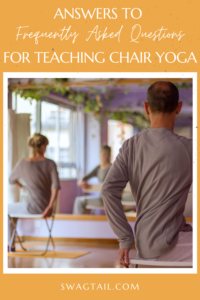 Chair yoga is an accessible form of yoga that can be done by a diverse population. As a chair yoga teacher, you want to keep your students safe while giving them the energetic, physical and mental boost of any yoga practice. This means you want to sequence and cue efficiently. With answers to these frequently asked questions (FAQs), you’ll be on your way boosting your chair yoga clients and helping them improve their quality of life at the same time.
Chair yoga is an accessible form of yoga that can be done by a diverse population. As a chair yoga teacher, you want to keep your students safe while giving them the energetic, physical and mental boost of any yoga practice. This means you want to sequence and cue efficiently. With answers to these frequently asked questions (FAQs), you’ll be on your way boosting your chair yoga clients and helping them improve their quality of life at the same time.
Back in my early twenties, I completed my master’s degree in kinesiology, finished my 200-hr yoga teacher training program, and started my yoga business within a three-month time period. I was motivated and ready to share the benefits of yoga with everyone.
At the time, I didn’t have an ideal client in mind, so I taught students of all levels. I helped brides-to-be get lean before their wedding day. My schedule also included helping athletes use yoga to increase performance. And, I taught chair yoga the elderly at senior centers around town.
All of these outlets taught me to modify yoga to the individual. Yet chair yoga encouraged me to be the most creative with my class structure and how I modified postures. In this post, I share with you what I have learned along the way (and how I continue to teach chair yoga in ways that benefits golfers, seniors, and computer-bound workers alike).
Cover Image: Daniel
HOW DO YOU SET UP A CLASSROOM FOR CHAIR YOGA?
There are two configurations I most like for chair yoga. The diagram on the left (below) is the way I would set up my classes for smaller groups, like 6-10 students. The semi-Circle approach is great because it offers everyone in class an up-front view of what’s going on. Plus, you as a teacher, can move your chair around easily to give students a better demonstration for each posture.
The second image (right) is how I would organize my classes for groups of ten or more. This configuration allows most people to see you relatively easily, and more importantly, gives you a better view of them as class goes on.
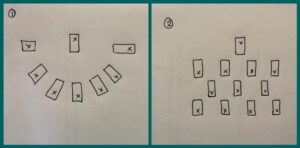
In either case, I ensure students have a yoga mat beneath their chair to keep them steady throughout practice. And, just like any other yoga class, I have them keep additional props close by if we’re using them.
HOW DO YOU SEQUENCE YOUR CHAIR CLASSES?
As a chair yoga teacher, I want to create a memorable experience for each of my classes. This starts by being deliberate in how we move the body. Thus, my first decision about sequencing for a chair yoga class to pick a physical focus for the practice. This could be to lengthen the sides of the body or Open the hips. The anatomical focus could also be on back-bending.
I then sequence with an arc, leading up to a main pose.
For example, when I work with athletes, I think about their sport. Take golfers, for instance. A lot of external rotation of the front hip is needed to execute a powerful swing. So, I might focus a class on strengthening that region.
Then, once I know the anatomical focus, I select a peak pose. I also dissect this pose to discern which parts of the body need to be:
- long (elongated)
- strong (warm and stable)
- mobile (flexible with controlled movement)
I also ask if balance will be required for the main pose, and work to incorporate balance postures in the sequence as well. With this knowledge, I can then select poses that help prepare the body for the main pose. Once the main pose is taken, I counter those movements to restore balance to the entire body.
Class Themes
As a chair yoga teacher, I also include a theme to my class in similar ways I would use with a hatha, vinyasa, or yin practice. Click here to check out some of my favorite class themes.
DO YOU TEACH CHAIR YOGA DIFFERENTLY THAN OTHER YOGA STYLES?
There are lots of similarities for chair yoga teachers as with other styles of yoga. This includes:
- A similar approach to sequencing (see above)
- Always start a class and ending practice in a meaningful way. This includes time to be centered and breathe.
- A pranayama element. For those who are seated, the breathing practice can often be more important than the moving parts. This helps decrease anxious thoughts and bring students into the present moment as well.
One main difference, however, is the level of intensity used when teaching chair yoga. This is especially true with older populations and those using yoga at work.
This might also mean that we go at a slower pace with the poses, too. You’ll just have to gauge the skill set of your current group to decide on intensity and pace when moving from a chair-based position.
WHAT ARE THE MOST COMMON POSES YOU USE IN A CHAIR YOGA CLASS?
Similar to many flow classes, there are some common poses used in chair yoga classes as well. Many of these include:
(1) Seated cat/cow to warm up the spine
(2) A lateral bend, or chandrasana, from a seated position
(3) Seated twist
(4) A standing balance (like simple tree pose or knee to chest).
The chair is a great prop to hold on to for those who are challenged in standing postures.
(5) A standing variation of Down-dog
(6) Uttanasana, or seated forward fold.
There are degrees to this fold, but it’s a great way to create space in the back side of the body.
(7) Eagle Arms
Use this posture to release tension in the rhomboids, traps, and external rotator muscles of the shoulder.
(8) Cow Face Arms
This posture teaches students to externally rotate one shoulder while internally rotating the other. All areas of the shoulder get attention as a result. Keep in mind a strap is a fantastic prop if students cannot clasp hands behind the back in this position.
(9) Seated figure 4 to release tension in the outer hips.
WHAT POSE MODIFICATIONS HAVE YOU CREATED?
You get to use your creativity as a chair yoga teacher because you won’t be using the traditional standing or floor-based postures in other styles. Yet you’ll still want to create strength and flexibility in many of the same body parts. That’s why I create many modifications for common yoga poses.
Some examples of these modifications include:
(1) Apanasana
This is when you hug both knees to chest. yet seated we do this in a chair by holding one knee at a time.
(2) Uttanasana with straight(er) legs
Have students move forward to the edge of their chair and straighten their legs as much as comfortable. This will target the hamstrings more directly, and possibly more deeply as well in the fold (vs more the back).
(3) Horse Stance with a side stretch
Take the legs wide, knees and toes turning out at the same angle. You can then take a lateral bend (with any arm variation).
(4) Horse Stance with a Twist
Use the same starting position above, and begin to rotate the spine. You can twist more upright, or fold forward (as in the images below).
(5) Prasarita Padottanasana
This stretch elongates the inner thigh, and using a chair can be a wonderful way to get into this region. You can also place one hand on the seat of the chair, while the other arm reaches high, into a twisted form of this posture.
Remember …
You are really limited only by your own imagination. Think of all of the poses you do standing, and start to try them out from a seated position. Or, if you like certain standing poses, see how you can keep the chair close by for support (your students just might need it).
WHAT CHALLENGES DO CHAIR YOGA TEACHERS ENCOUNTER?
The challenges you face during a chair yoga class are inevitably tied to the population you’re teaching. For example, when working with seniors, some common concerns were:
- Decreased Hearing ability. You have to speak loudly and clearly, even in those beginning and ending parts of class that give depth to the practice. I also refrain from using music with older individuals. The sound will often compete with my words and I want students to be able to hear me clearly.
- High blood pressure. This is a common condition in the elderly. Yet it’s also something seen in younger populations as well. This means that inversions that reverse the flow of blood from the heart to the brain could be a contraindication for some participants.
- A Heart condition. Vigorous movements can be challenging for those with heart disease, and thankfully as a chair yoga teacher, you’re likely moderating your poses to meet the skill set of your clients. Keep in mind that temperature or humidity can also affect circulation and be a concern for those with heart disease.
When I teach chair yoga to golfers, though, I’m often more concerned about previous injuries that are related to golf or just injuries from life. Many times this involves low back and shoulder limitations.
Once you have a general idea of the group age, ability level, and physical health of the participants in your chair yoga class, you can start to do your research about common concerns. Having students fill out a liability form is also essential so you can glean specific details about their health before you get started. This could affect which poses you teach, and the intensity level with which you teach.
DO YOU HAVE ANY OTHER ADVICE FOR CHAIR YOGA TEACHERS?
Keep it simple. Your yoga skills are likely far more advanced than those of your chair yoga students. Many of them are taking your class to feel better in their bodies and focus their mind. Even the simplest yoga sequence you teach can help them achieve these goals.
I also noticed that many older individuals had the same negative stories in their head. These were revealed with how they spoke about their bodies and their lives. That’s why incorporating pranayama is a great way to interrupt those patterns and create mental relief. This was often more powerful than the physical benefits they received during class.
WHAT CHAIR YOGA RESOURCES DO YOU RECOMMEND?
There are a few chair yoga resources that I like. These include the following books:
- Chair Yoga, by Kristin McGhee (book) The subtitle says it all: “Sit, Stretch, and Strengthen your way to a Happier you!”
- A Chair for Yoga, by Dr. Eyal Shifroni (book) Don’t let the lackluster cover fool you. The creative use of a chair in this book will definitely spark ways in which you can use a chair with your own clients–regardless of their yoga skill level.
- Relax and Renew, by Judith Lasater (book). This is one of my absolute favorites for restorative yoga, and it just so happens to have some great chair yoga ideas for those more mobile in nature. It’s also a great resource for any yoga teacher looking to reduce stress with yoga.
Video Learning
- Beyond Chair Yoga, a workshop by Yoga Medicine. I’ve done hundreds of continuing education hours with Yoga Medicine, both in person and online. Their information is high-quality and extremely applicable to your own teaching style and platform.
PUTTING IT TOGETHER
A chair is the most essential yoga prop for chair yoga teachers. In fact, the chair becomes a stable base from which to sit, stretch, and move. It’s also a support which helps yogis discover greater balance when standing. And, for the more mobile population, you can even use a chair to go more deeply into active postures or find more relaxation in yin ones.
Since chair yoga is a great way for many individuals to access yoga, use the answers to these frequently asked questions to share this practice more confidently with your students today.
Take Action Now
- Download our Guide for Chair Yoga Teachers above. It has a few of my favorite sequences, as well as the highlights from the content above.
- Get on your mat and try some of the yoga poses from this article.
- Send us your questions, or post them in the comments section below. We want to give you all of the tools you need to be the amazing chair yoga teacher you are!


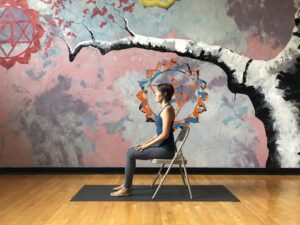
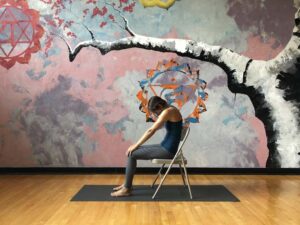
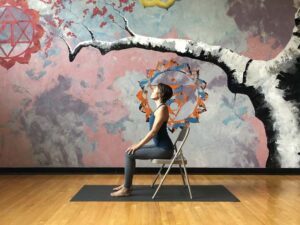
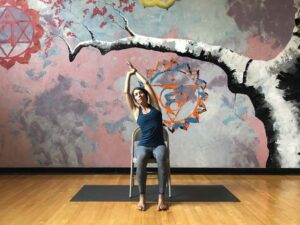
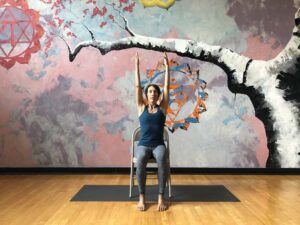
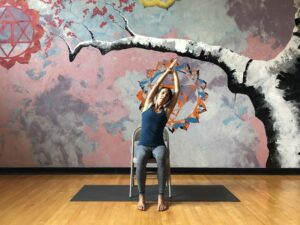
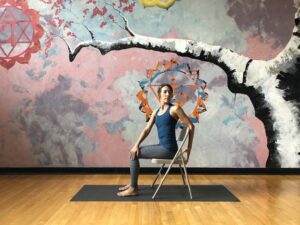
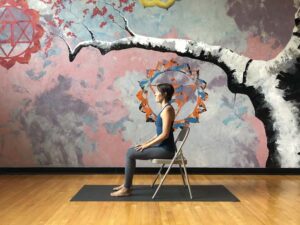
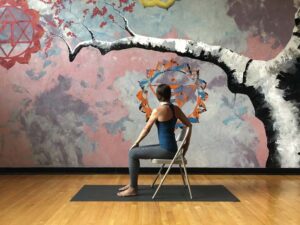
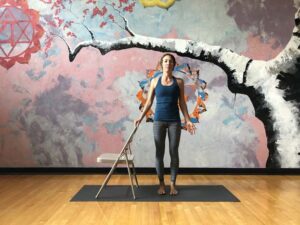
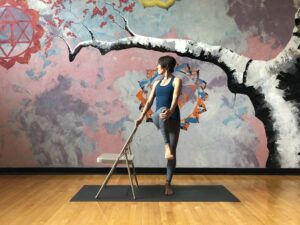
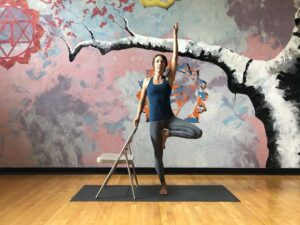
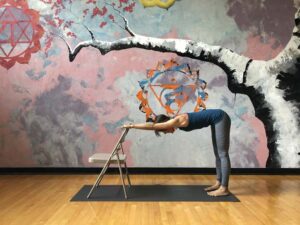
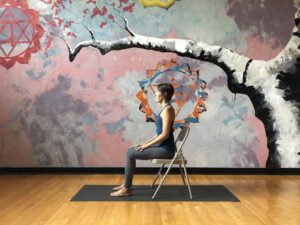
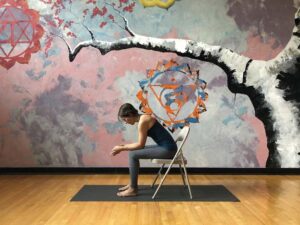
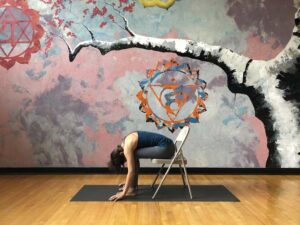
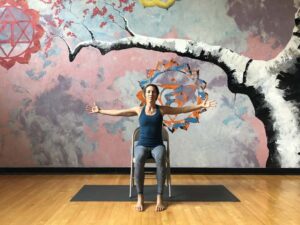
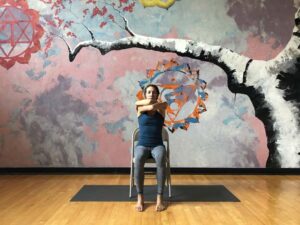
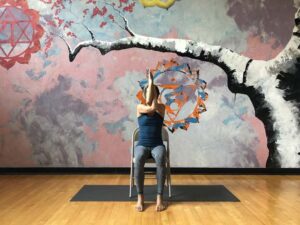
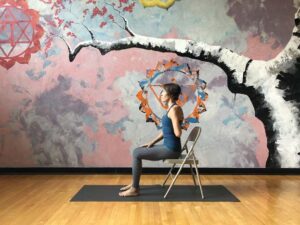
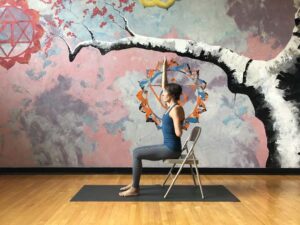
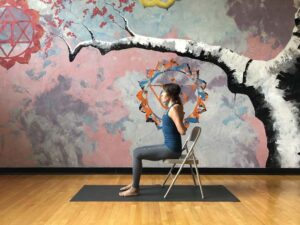
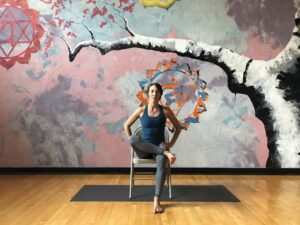
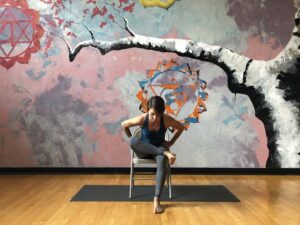
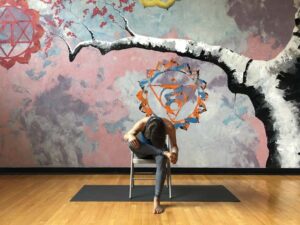
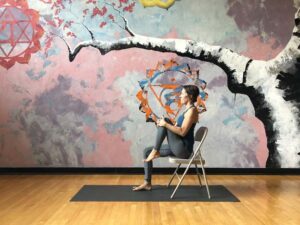
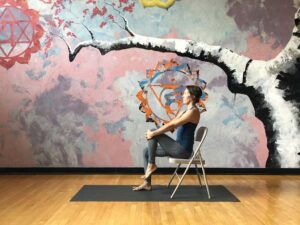
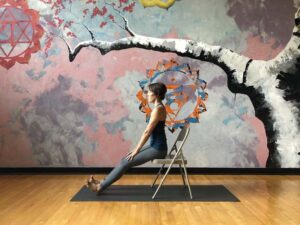
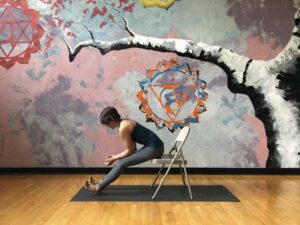
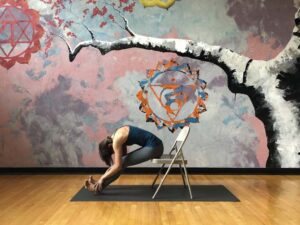
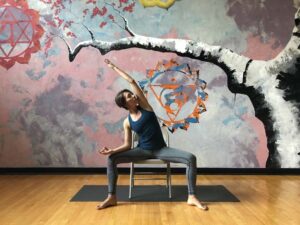
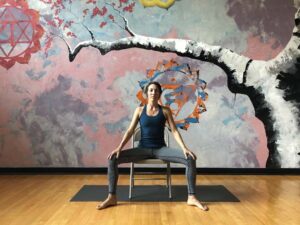
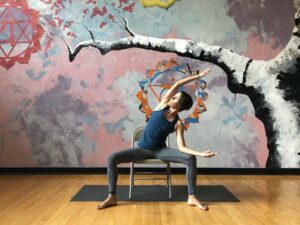
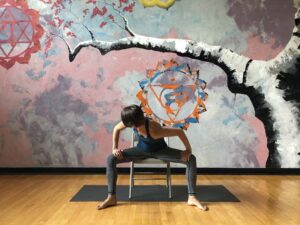
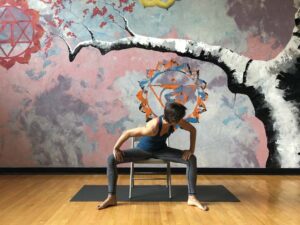
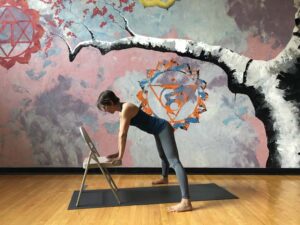
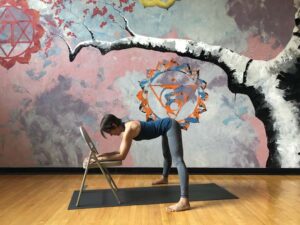
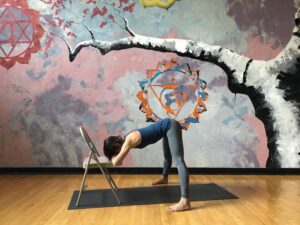
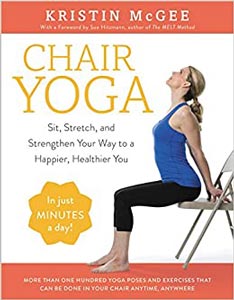
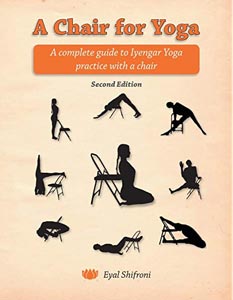
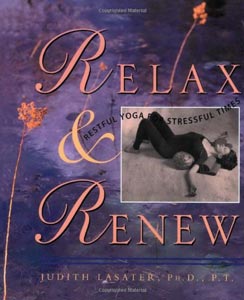


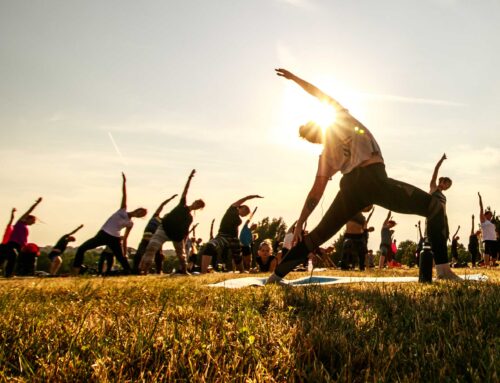

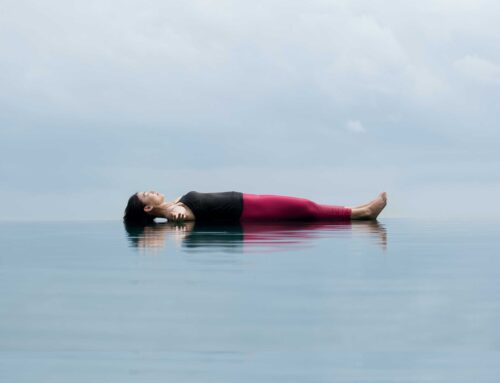
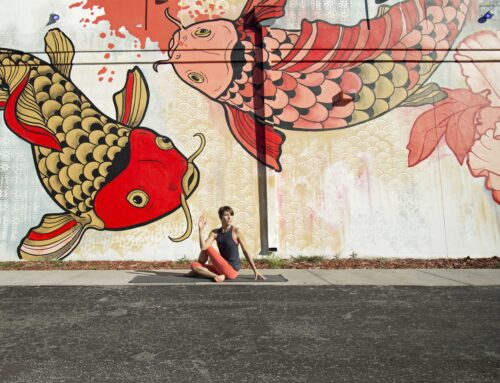
Leave A Comment